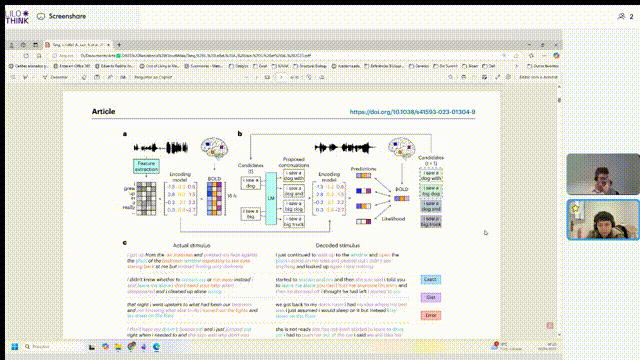When deep diving into the literature and references for the Residency project, I came across an article by the MIT Technology Review on tiny caps to measure electrical activity in “mini-brains”. More related to the planned and speculative second phase of our project, we proposed that brain organoids (3D clusters of cells grown in vitro - thus the name of the project currently under development - that simulate the architecture and function of a human brain) will be used to generate signals that would be employed to train an artificial intelligence model capable of decoding what these tiny brain-like artifacts would be thinking. Would they be capable of creativity?
Thus, learning that researchers are working on microcaps with microelectrodes capable of adjusting to the spherical organoids, was indeed relevant. It turns out that scientists from the prestigious Johns Hopkins University are tackling the important hurdle of measuring the signals fired by neurons in these microscopic assemblies, given that today’s available tools are usually flat electrode array plates that only come into contact with the cellular structure in a tangential manner. The new microcap could collect signals while wrapped around the organoid, allowing it to obtain data from the entire surface.
As described in the scientific paper published in Science Advances “The optically transparent shells are composed of self-folding polymer leaflets with conductive polymer–coated metal electrodes.” The most interesting aspect of the cap, design wise, is probably the way in which the programmable folding would occur around the organoid structures, as modeled in the articles’ pictures.

(B) FEM snapshots showing organoids of different sizes (400 to 600 μm) fitting in tailored shell electrodes. (C) Corresponding SEM images of 3D shell electrodes with different levels of folding. The images are false-colored, with blue indicating the SU8 shell and yellow indicating the electrodes. Scale bar, 100 μm. (D) Bright-field image of the organoid in a 3D shell MEA, and (E) confocal image showing the top view (projected confocal stack) of a brain organoid (green, Fluo-4 calcium dye) with a diameter around 500 μm encapsulated in the 3D shell (blue) electrodes. Scale bar, 100 μm.
At the end of the article, the authors propose that AI-based methods for human EEG analysis could be used for the analysis of the recordings generated by this new method.
This is where we want to get!
 Eduardo Padilha
Eduardo Padilha  Protocolo ComfyUI
Protocolo ComfyUI